Nikon CoolPix S50c Review
Nikon CoolPix S50c
Share your picture by email or internet direct from the camera via WiFi.
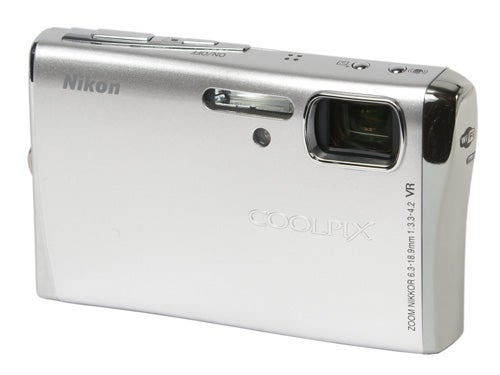
Verdict
Key Specifications
- Review Price: £192.00
As I’ve mentioned before, one of the most problematic issues with digital cameras is that of how to share your pictures. If you’re reasonably tech-savvy it isn’t much of a problem; you can download, store, edit, print and email your photos with ease. But for those less technologically adept people who are daunted by USB connections, card readers, image editing programs and printer options it isn’t so easy. In fact some people never download their photos at all, instead storing them on the camera’s memory card, and only ever viewing them on the camera’s built-in monitor.

Some camera manufacturers have attempted to address this problem. Kodak has its EasyShare printer docks, and Canon developed the PictBridge system for direct camera to printer connection. Nikon has tried something a bit different though. Starting with the CoolPix P1 it has added WiFi wireless capability to some of its models, designed to make sharing pictures relatively simple.
The latest camera to incorporate this technology is this CoolPix S50c. It is a fairly basic and easy-to-use pocket snapshot camera with a 7.2-megapixel sensor, a corner-mounted non-protruding 3x zoom lens (equiv. 38-114mm), a large 3-inch wide-view monitor and optical image stabilisation. Considering this specification, the S50c might seem alarmingly expensive at nearly £200. The reason for the high price is its built-in WiFi wireless link, which can connect to any home wireless network or public access point, and transmit pictures either as email or by uploading them to a new image-sharing website which Nikon has set up, called My Picturetown, from where your friends can view and download them.
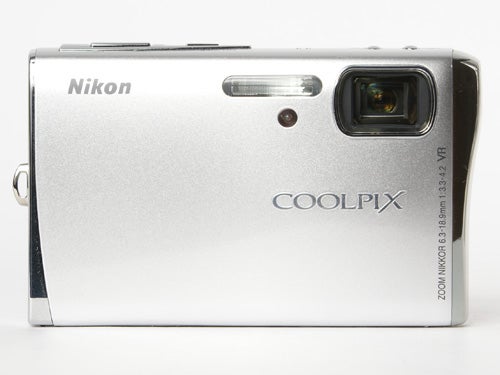
This is a useful approach to picture sharing, because free WiFi internet access is now provided in many public areas in larger cities throughout the world, such as cafés, libraries and airports. As well as this many people now have home networks, with several computers sharing a broadband internet connection via a cheap wireless router. The S50c can log into any of these via a relatively straightforward set-up process, and can send pictures either directly to the My Picturetown site, requiring only an active email address for registration, or to any email address.
Having tried a few supposedly WiFi capable gadgets – including some cameras – in the past and found them to be about as user-friendly as a cornered rat, I was pleasantly surprised by how quick and easy setting up the S50c proved to be. It automatically detected my home wireless network, and after entering my WPA security key and my own email address it was ready to go. You can enter these details either via the supplied utility software or directly into the camera, but it has to be said that the latter option is a bit of a pain. The S50c has the usual compact camera controls, with a limited number of buttons and a D-pad. The pad rotates, enabling you to quickly scroll through letters, but it still took two attempts to enter my 16-digit WPA key. Entering a long email address would take a lot of patience, but thankfully you only have to enter it once. Email addresses can be stored on an internal address book.
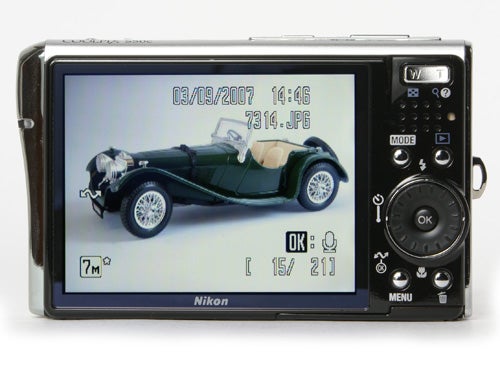
The My Picturetown site is well designed, with the option to sort photos into folders or albums, share them via email or a Flikr account, view them as a slideshow or download them to a computer. However I found the uploading and especially the downloading process to be extremely slow. I have a fast 4Mb cable broadband internet connection and a high-speed 2.4Ghz 802.11g wireless router, but uploading just three pictures to the site took well over five minutes, and downloading the same three pictures from My Picturetown to my home PC took over 25 minutes, with a transfer speed that seldom exceeded 9kb/s and which frequently paused for several minutes. For comparison, I regularly get download speeds in excess of 400kb/s from other websites. The picture files themselves aren’t particularly huge, at around 2.6MB each, and are downloaded in Zip-compressed folders, so there’s really no excuse for this kind of performance. Uploading and downloading files this size should take seconds over a fast connection, not hours. If you were hoping to upload all your holiday snaps from the hotel bar, you’d better book an extra week off. I hope that this slow transfer speed is just a teething problem that will be ironed out soon, because it seriously limits the usefulness of the WiFi feature.
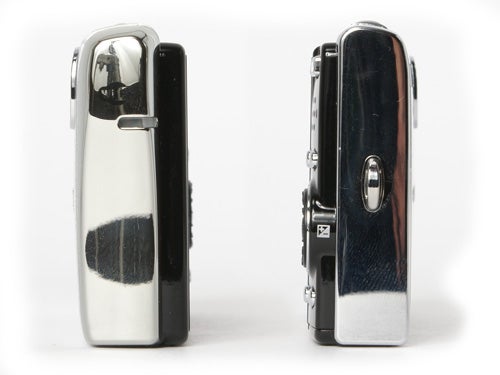
So much for the Web 2.0 stuff, what about the camera itself? Well it certainly looks the part, with a sleek and subtly curved shape and a smooth lacquered metallic finish. It measures 97.5 x 59 x 21 mm, making it one of the slimmer cameras on the shelf, and weighs only 125g, making it one of the lightest too. Despite this it feels solid and well made, and the overall build quality is well up to Nikon’s usual high standard. The large 3-inch, 230kp LCD monitor is sharp and bright enough for daylight use, but it does take up a lot of space on the back of a fairly small camera, and as a result the controls are small and cramped, making them fiddly to operate. The rotary D-pad is quick for data entry, but it turns very freely which can make menu navigation difficult. The other buttons are very small, especially the zoom control, which is a tiny rocker switch. The only really accessible control is the on/off button, which sits exposed at the apex of the curved top panel, and is very easy to turn on accidentally. One slightly annoying feature is that unlike most other Nikon compacts, the menu control is not “shooting-priority”. For most cameras, tapping the shutter button with instantly close any open menus and return the camera to shooting mode. With the S50c however you have to manually close the menu by pressing the menu button before you can shoot.
As I said, apart from its WiFi capabilities the S50c is a fairly simple camera, with a very limited set of features. Shooting modes are limited to automatic, high-ISO mode for low light shooting, video mode (VGA 30fps) and scene mode, which has 15 scene programs, including most common ones, such as portrait, landscape, sports, fireworks etc. In normal shooting mode menu options are limited to image size and quality, white balance, sensitivity, Best Shot Selector, a limited palette of colour options, and drive mode, which includes continuous shooting, 16-in-1 burst mode and an interval timer. The only other two noteworthy functions are the VR optical image stabilisations system, which provides a reliable 2-3 stops of extra stability at low shutter speeds, and the face detection system, which is useful for portrait shots.
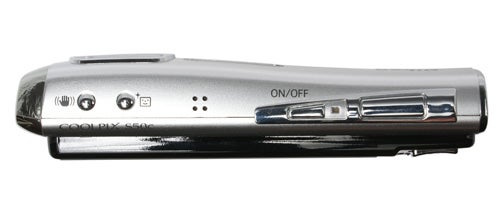
For such a simple camera the S50c is surprisingly slow. It takes around four seconds to start up, which is a long time considering it has a non-extending lens. In continuous shooting mode it can manage approximately one shot a second with a decent memory card, but in single-shot mode the shot-to-shot cycle time is approximately four seconds a shot, which is much slower than most comparable compacts. The main reason for this, and to be honest I’m getting sick of saying this, is the bloody awful AF system that Nikon has for some reason decided to inflict on all of its compact cameras. Even in good light, with a high-contrast stationary subject and at medium range, the S50c took well over a second to focus, hunting backwards and forwards through the focal range at least twice. Zooming in slowed it down even more. In low light the focusing is helped by an AF assist lamp with a range of about three metres, but the focusing slows down even more still, taking as long as four or five seconds to focus.
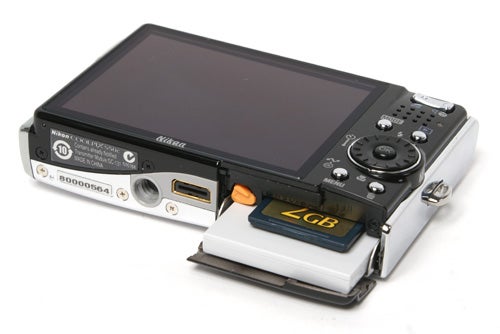
Image quality was average at best, with image noise visible on shots even at the minimum of 100 ISO, and visible compression artefacts in pictures even at the maximum quality setting. While exposure was generally accurate, colour reproduction was a bit under-saturated and generally lacked contrast. The overall level of detail was also quite low for a 7MP camera, but while the lens wasn’t the sharpest Nikkor glass I’ve ever seen, it was at least consistent, providing reasonable sharpness from edge to edge, albeit with a lot of barrel distortion at the wide-angle end.
”’Verdict”’
The CoolPix S50c is an attractive and well-made camera, and the WiFi capability is both useful and easy to use, but its sluggish performance, unimpressive picture quality and very slow AF system are major problems. Considering the price, unless you really want that wireless connectivity it’s a hard camera to recommend.
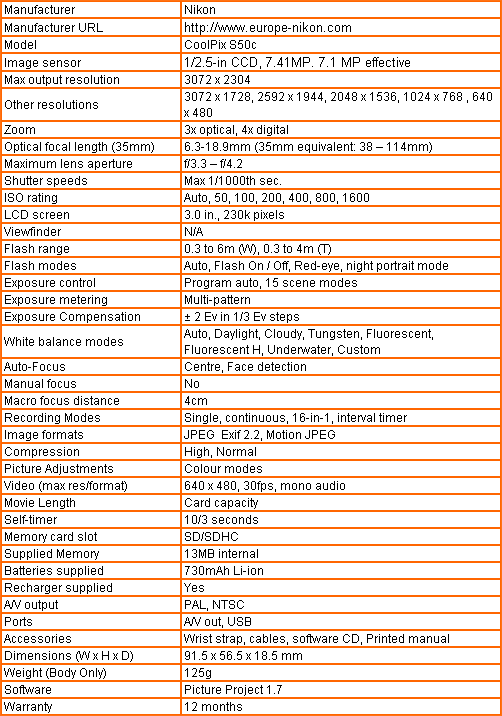
”Over the next few pages we show a range of test shots. On this page the full size image at the minimum ISO setting has been reduced to let you see the full image, and below that a series of full resolution crops have taken from original images at a range of ISO settings to show the overall image quality.”
—-
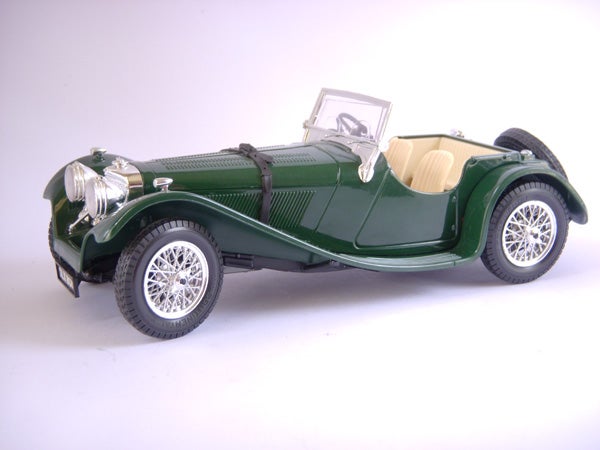
—-
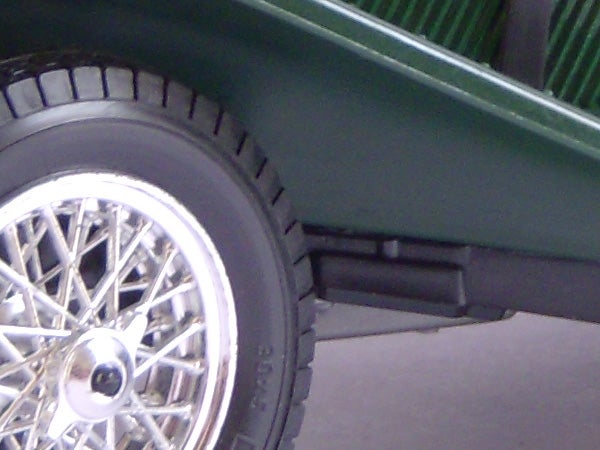
Even at the minimum ISO setting of 100, there is colour speckling and visible noise in the darker areas.
—-
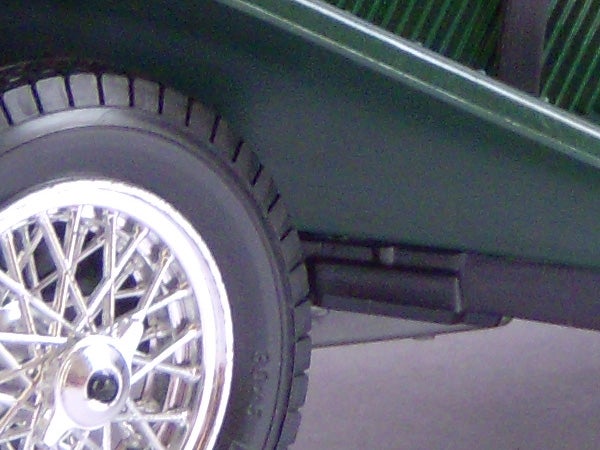
200 ISO and the noise is slightly worse.
—-
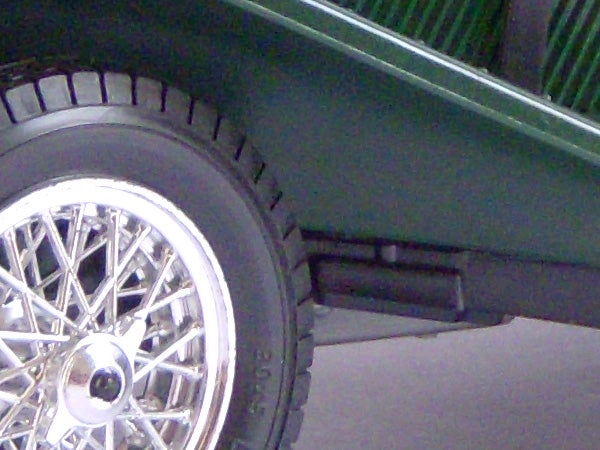
At 400 ISO overall colour distortion is starting to appear.
—-
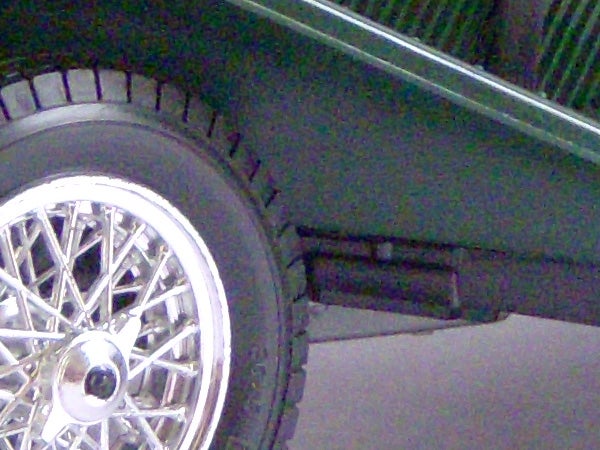
Fine detail is lost by 800 ISO.
—-
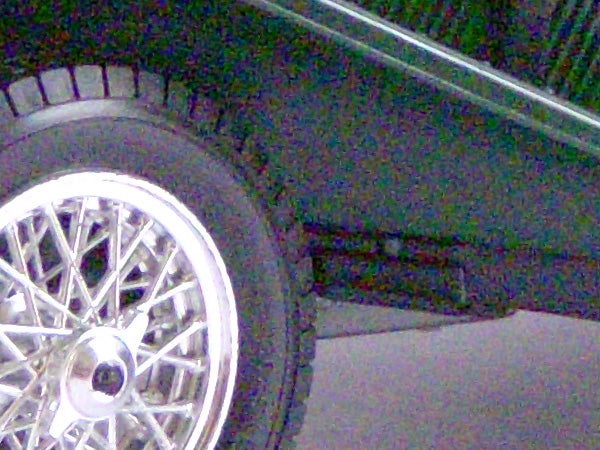
At the maximum 1600 ISO there is widespread noise across the whole image.
—-
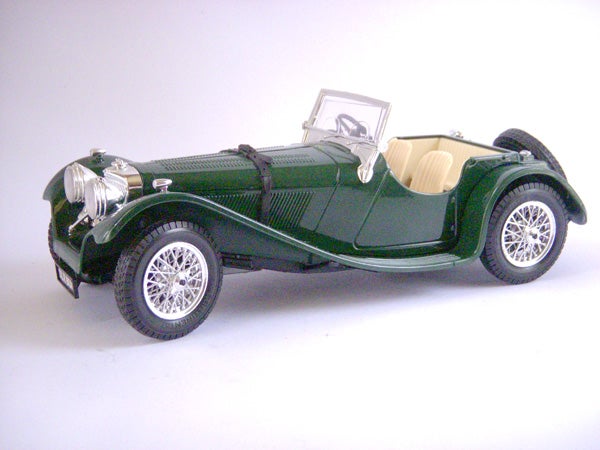
This is the full frame at 1600 ISO.
—-
”A range of general test shots are shown over the next two pages. In some cases, the full size image has been reduced for bandwidth purposes, and a crop taken from the original full resolution image has been placed below it to show the overall image quality. Some other pictures may be clicked to view the original full-size image.”
—-
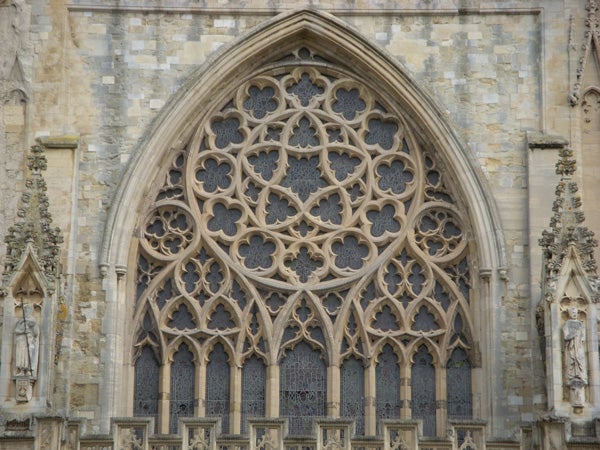
Here’s my usual detail test shot, the West Window of Exeter Cathedral. See below for a full res crop, or click to see the whole picture.
—-
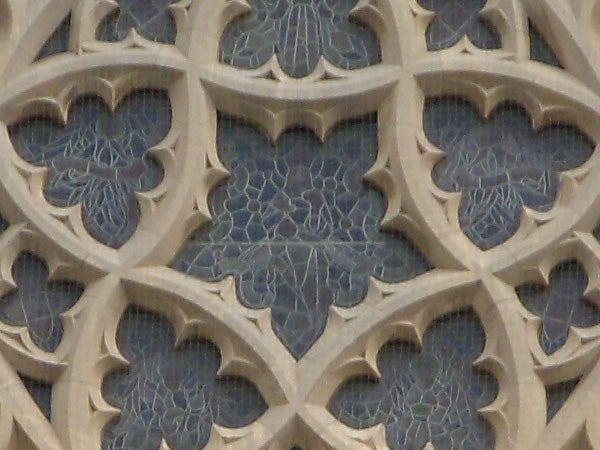
The overall level of detail is low for a 7mp camera. Compare this with the Nikon S200 I reviewed last week.
—-
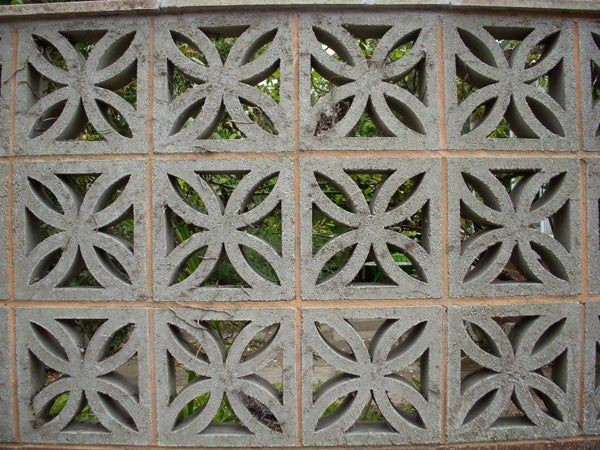
Quite a bit of wide-angle barrel distortion from the folded-optics lens.
—-
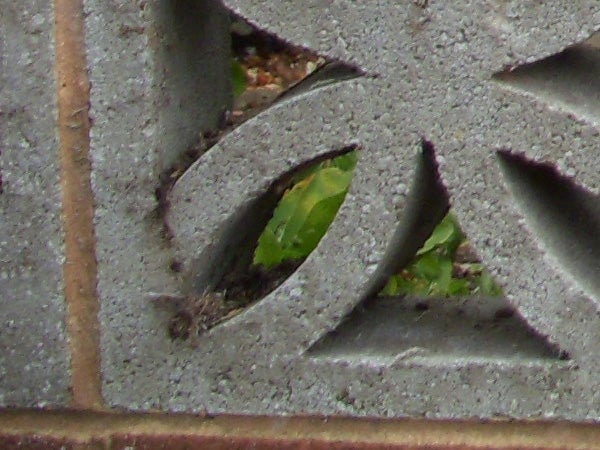
At least the edge-to-edge sharpness is good.
—-
”A range of general test shots are shown over the next two pages. In some cases, the full size image has been reduced for bandwidth purposes, and a crop taken from the original full resolution image has been placed below it to show the overall image quality. Some other pictures may be clicked to view the original full-size image.”
—-

The wide angle end of the zoom is equivalent to 38mm, not very wide at all.
—-

Taken from the same spot as the shot above, this shows the other end of the zoom range, equivalent to 114mm.
—-
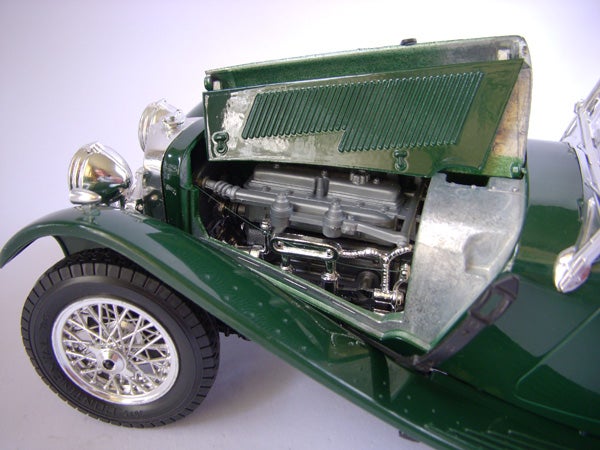
The macro range is supposed to be 5cm, but I couldn’t get it to focus that close.
—-
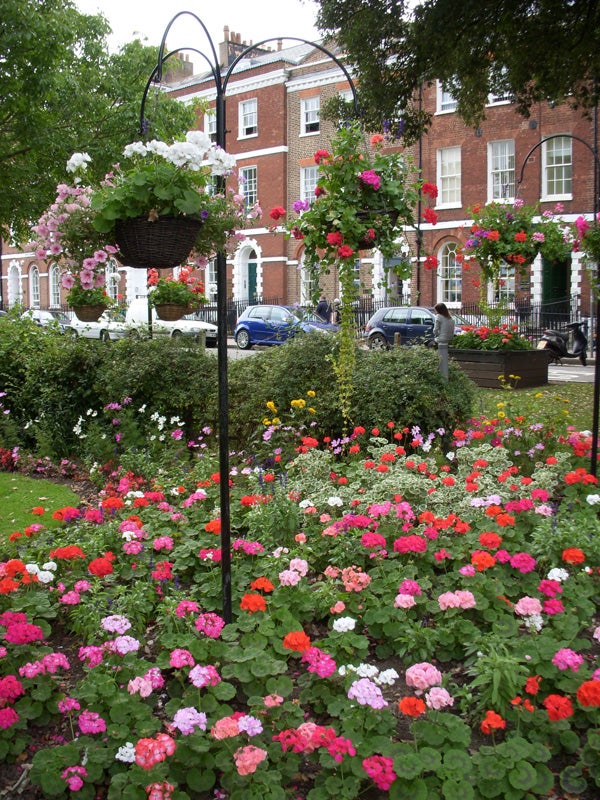
Colour rendition is average at best.
—-
Trusted Score
Score in detail
-
Value 4
-
Image Quality 7
Features
| Camera type | Digital Compact |
| Megapixels (Megapixel) | 7.2 Megapixel |
| Optical Zoom (Times) | 3x |
| Image Sensor | CCD |
| Image Stabilisation | Optical |
| LCD Monitor | 3 in |
| Flash modes | Red-eye Reduction |
| Video (max res/format) | 640 x 480 |
| Memory card slot | Secure Digital (SD) Card |

